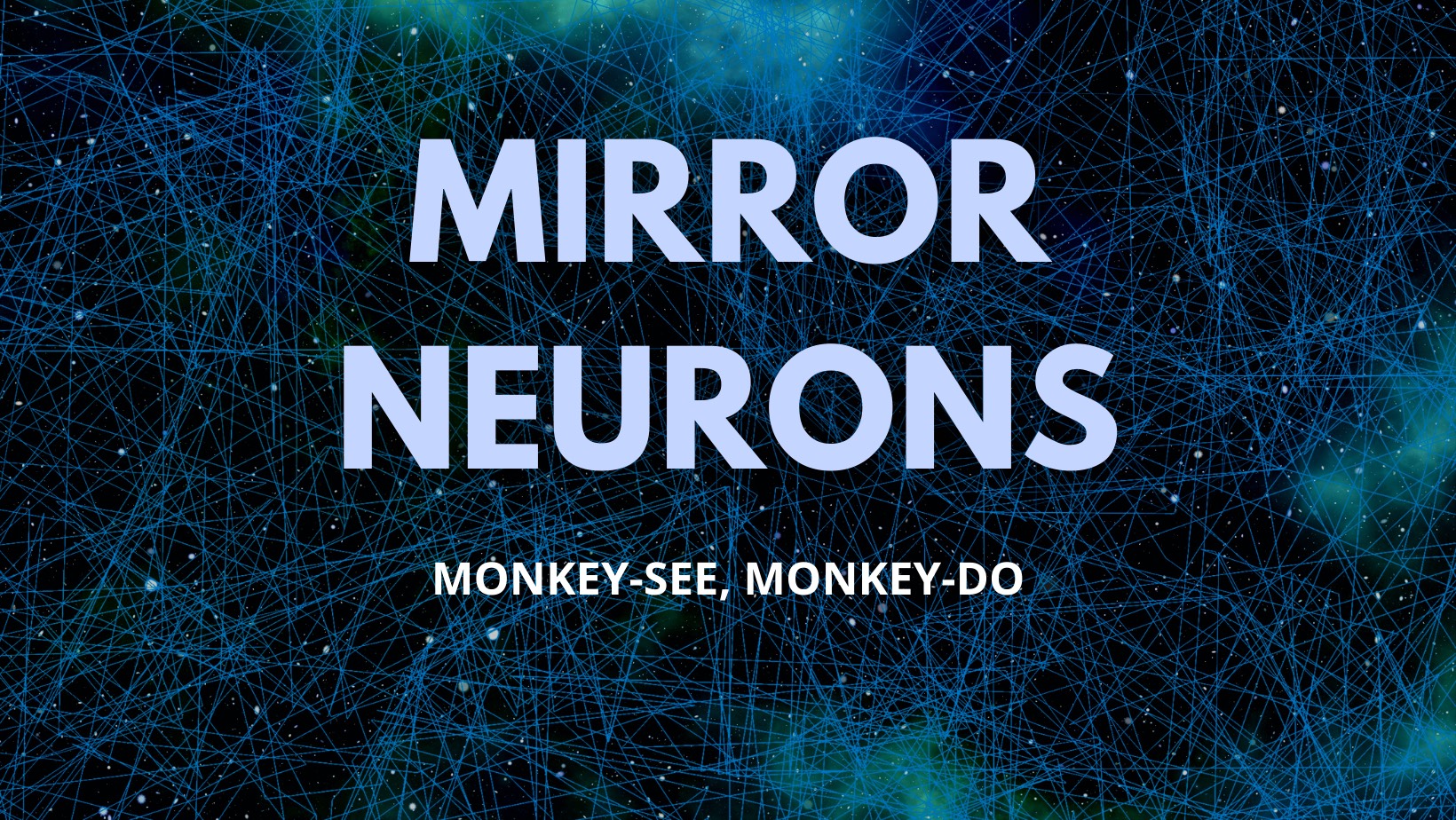Mirror neurons : Monkey See, Monkey Do
Why do we tear up when we see a loved one cry?
Mirror neurons are a type of brain cell that respond equally when we perform an action and when we witness someone else perform the same action. “Monkey see, monkey do” – a phrase used to refer to the learning of a process without an understanding of why it works. When researchers studied mirror neurons they saw these cells appeared to be activated both when the monkey did something itself and when the monkey simply watched another monkey do the same thing. Mirror neurons are therefore also called the “minds mirror”.
When we see someone being sad, for example, our mirror neurons fire and that allows us to experience the same sadness and to feel empathy (putting ourselves in the opposite persons shoes). They are activated by sensory (pain with needle prick) , motor (playing a piano) and affective (entertain, and then experience, the emotions of another individual.) – the thought of these actions cause the same brain areas to get activated as if the action were actually taking place.
Originally discovered in a subdivision of the monkey’s premotor cortex and area F5. Later mirror neurons were also found in the inferior parietal lobule (IPL). In humans, brain activity consistent with that of mirror neurons has been found in the premotor cortex, the supplementary motor area, the primary somatosensory cortex, and the inferior parietal cortex.
Thus observing others or relating to one’s own past experiences self- activates similar brain areas in humans.
Fact: Activity in these regions is unlikely to be directly linked to a particular emotion. Also, simulation of a particular emotion is unlikely to be related to a specific brain region.
This theory has been criticized by some scientists since they believe this may not explain each facet of emotion generation. Additionally, there is not an equal mirror effect every time. Let us look at some examples –
- If a salesman of secondhand cars smiled broadly while bragging about the quality of a rusty old car, our simulation circuitry could make us share his enthusiasm, but our semantic knowledge about second-hand car salesmen/ the visual condition of the car could lead us to a different conclusion.
- When acupuncture practitioners watch needles being inserted into their patient’s, it doesn’t activate their own pain matrix. Thereby in a way getting – desensitized/ inhibited.
Fact: The sensory part of the pain matrix is engaged more when the perceived pain reaction of another person matches how we would respond ourselves. For example, the gender of the observed individual can influence our neural response.
Lastly, the automatic sharing of affect and action may have a fundamental role – that begins in an infants’ plastic brain and progresses with our growth to adapt and show empathy in real life situations.
References:
- https://www.apa.org/monitor/oct05/mirror#:~:text=Mirror%20neurons%20are%20a%20type,else%20perform%20the%20same%20action.
- Kilner, J. M., & Lemon, R. N. (2013). What we know currently about mirror neurons. Current biology : CB, 23(23), R1057–R1062. https://doi.org/10.1016/j.cub.2013.10.051
- https://www.psychologicalscience.org/news/releases/monkey-see-monkey-do-the-role-of-mirror-neurons-in-human-behavior.html#:~:text=Over%20twenty%20years%20ago%2C%20a,monkey%20do%20the%20same%20thing.
- Acharya, S., & Shukla, S. (2012). Mirror neurons: Enigma of the metaphysical modular brain. Journal of natural science, biology, and medicine, 3(2), 118–124. https://doi.org/10.4103/0976-9668.101878
- Bastiaansen, J. A., Thioux, M., & Keysers, C. (2009). Evidence for mirror systems in emotions. Philosophical transactions of the Royal Society of London. Series B, Biological sciences, 364(1528), 2391–2404. https://doi.org/10.1098/rstb.2009.0058






No Comments